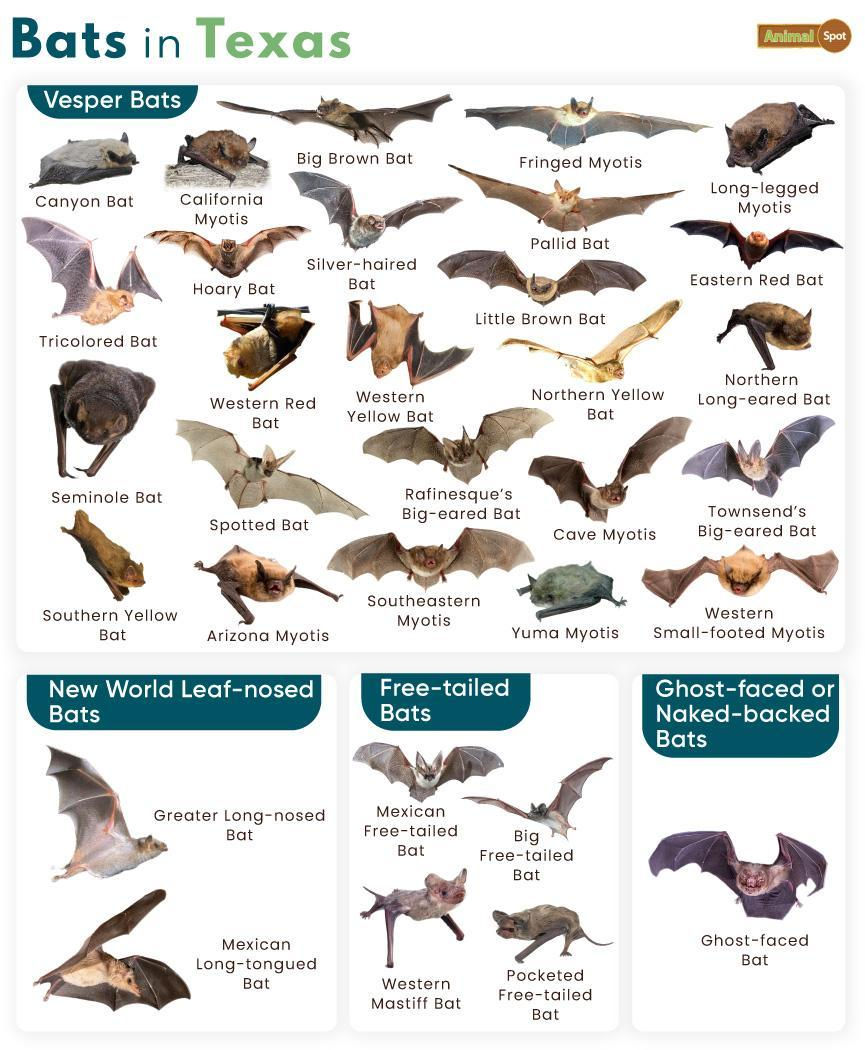Help, I Found A Bat!
- KeeperTalk
- Jun 3
- 4 min read

In Texas, there are many different species of bat that you may stumble on. Common species for the East Texas area are the Mexican free-tailed bat, eastern red bat, big brown bat, evening bat, seminole bat, hoary bat, tricolored bat, and the northern yellow bat. Bats play a very important role in the East Texas ecosystem by consuming large amounts of pests, acting as pollinators, and even contributing to nutrient cycling for the entire ecosystem. The image below shows the bats of Texas that may help you identify what kind of bat your new buddy is!

What causes a bat to become grounded?
When a bat is “grounded” it means that the bat is unable to or unwilling to fly. This can be caused by an illness like rabies, white-nose syndrome, or other parasites or infections. An injury to a wing, dehydration, starvation, exhaustion, weather conditions, habitat disturbance and human interference can all also be causes for grounding. Grounding is also commonly seen amongst young bats or newborn pups that have been abandoned by their parents and have never been taught to fly properly.

What do I do if I find a grounded bat?
First, DO NOT touch the bat with bare hands. As we have learned, the bat may be grounded due to disease or illness like rabies, and the bat may feel threatened or vulnerable in its grounded state, increasing your chances of getting bit. Before handling the bat, find a pair of thick leather gloves that will defend you against any bites or scratches your new scared friend may leave.
Once you have obtained the proper gear to protect yourself, assess the situation in front of you. Signs of illness for bats include activity during the day, as they are nocturnal creatures! The bat could also just simply be resting, waiting for dusk to fall so they can begin hunting.
Still having yet to physically touch the bat, if you can see that it is in no immediate danger then just observe from a distance. The bat may take flight once night falls, but if it is in a super high traffic area, use a box and gloves to move it to a safe and elevated spot close by to where you originally found the bat, so as to not disorient the bat too much.
If the bat is injured, sick, or a baby, you can contain the bat using a box and your gloves. Make sure all movements are slow and delicate, consider how you would want to be handled if you were found sick and injured in the woods. Once in the box, make air holes for the bat and place in a quiet and dark place to reduce stress. The image below shows a good example of what a bat box should look like.

After the bat has been secured, it is imperative that you call a wildlife rehabilitation facility like Tiger Creek Sanctuary, to begin arranging for the bat to be taken into treatment. Other rehabilitators in the East Texas area include: A Wild Life Animal Sanctuary and Bat World Sanctuary. While we understand it is hard to part with your new found friend, please do not try to treat the bat yourself, specialized care is needed to ensure a proper recovery.
***IMPORTANT*** Do NOT try to feed them or offer hydration without first speaking to one of our wildlife experts! Offering food, water, or formula of any kind can end up hurting or killing the animal.

If bitten or scratched by the bat, immediately wash the area with soap and water and go to the emergency room for post-exposure rabies treatment as a safety measure. Do not release the bat that bit or scratched you back into the wild, call a wildlife rehabilitation center or animal control to obtain the animal.

TL;DR Help, I found a bat!
Capture - catch the injured or orphaned animal in a manner that is safe for both you and the wildlife
Contain - contain the animal in a sturdy box, tub, or pet carrier that has a lid it can't escape from
Warmth - place half of the container on top of a heating pad, place a bottle filled with hot water and wrapped in a towel inside the carrier, or use another source of heat to carefully warm the animal while allowing it to rest in a dark and quiet place away from children or pets, and limit handling.
Contact - Please reach out to us, your local game warden or wildlife officer, or another licensed wildlife rehabilitator to get further instructions. We can be reached via text at 903.636.3193, by call at 903.858.1008, or via our website here at www.tigercreek.org or www.awildlife.org.






